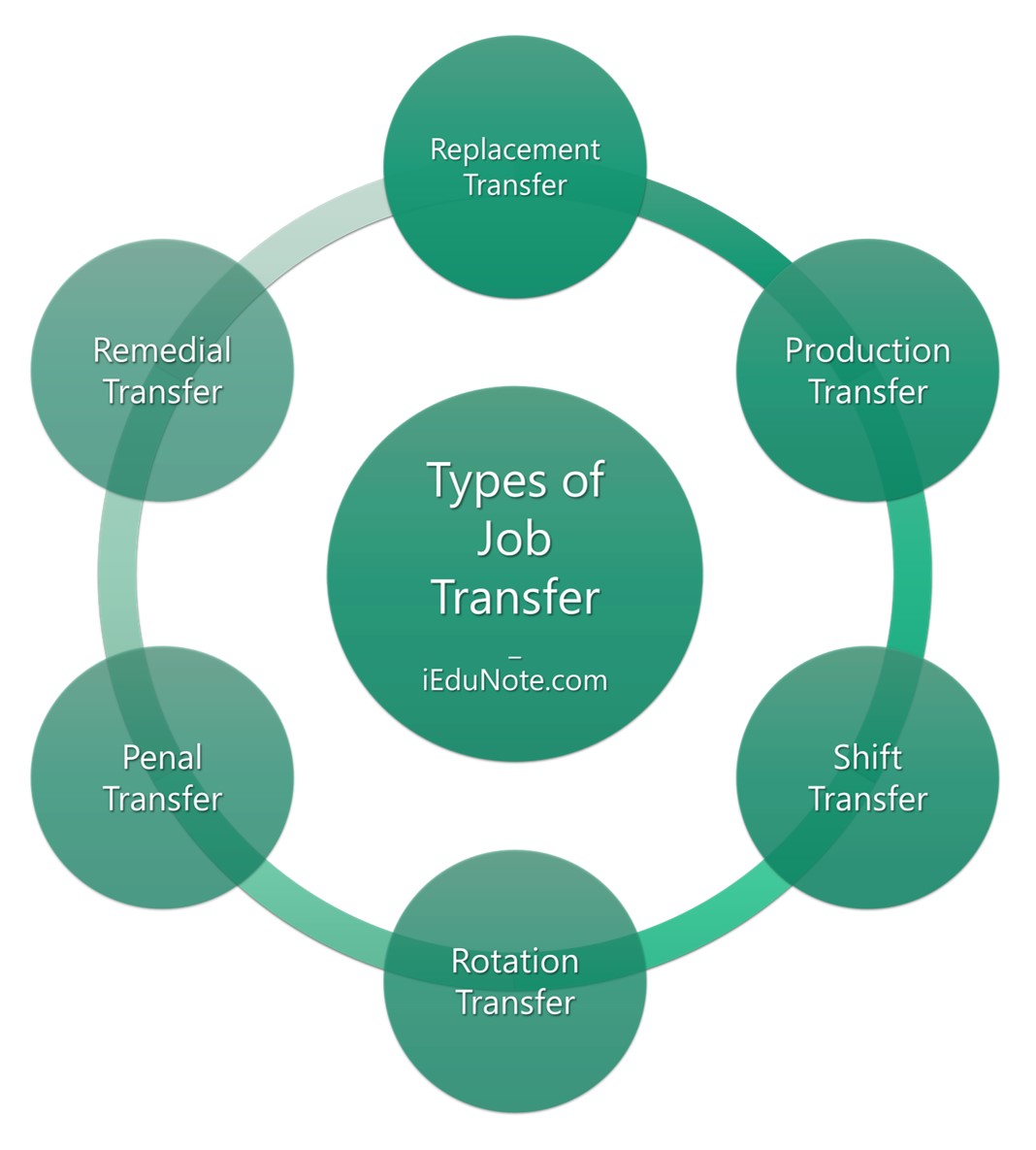
Job transfer occurs when an employee moves from one job to another with equal pay, responsibility, and status.
A transfer is a lateral movement of an employee, not involving promotion or demotion. Job transfer may require an employee to change his workgroup, workplace, or organizational unit.
The HR department must be able to reallocate its human resources to meet internal and external challenges.
Definition of Job Transfer
Job transfer is relocating an employee to the same class in a different job site or a related classification within the same salary range.
Keith Davis states, “Job transfers occur when an employee is moved from one job to another position that is relatively equal in pay, responsibility and/organizational level.”
It relates to mobility, which is limited to the motility of a worker from one job to another job at a similar level of the hierarchy.
Job transfer is viewed as an alteration in a job where the worker moves from one job to another in the unchanged level of a hierarchy involving the same skills, tasks, a similar rank, and an identical income level.
Therefore, job transfer is a horizontal job assignment.
A transfer is a lateral move to a position in the same classified pay range (classified position) or a position with comparable duties and responsibilities (non-classified positions).
A transfer may be beneficial to job holders.
The main benefits are :
- The broadening transfer experience may provide a person with new skills and a different perspective, making him a better candidate for future promotions.
- By moving people into jobs, managers may be able to improve the utilization of their human resources.
- A transfer may improve an individual’s motivation and satisfaction, especially when a person finds little challenge in the old job. The new position may offer new technical and interpersonal challenges. In turn, these challenges may prove to be a growth-oriented opportunity for the transferee.
Objectives of Job Transfer (Why Transfer is Used)
Transfers are generally affected to achieve the following purposes:
- To satisfy the needs of an organization arising out of a change. To satisfy organizational necessities due to the quality of products, alteration in a production program, alteration in technology, variations in the market conditions, for instance, introduction of new lines, demand variation, and dipping of existing lines.
- To meet the request of an employee. Employees might ask for a transfer to satisfy their wish to work under a friendly manager in a unit where prospects for progression are brilliant, near their residence place, or where the job is more demanding.
- To utilize properly the services of an employee who is not performing satisfactorily.
- To suit the age and health of an employee.
- To train the employee for later advancement and promotion.
- To supply creative opportunities to deserving employees.
- To correct erroneous placement.
- To adjust the workforce of one plant or department with that of another when one is closed down.
- To perk up employees’ backgrounds by placing them in diverse jobs in different units. This develops the employee and facilitates him to acknowledge any job.
- To adjust the employees for the period of layoff or unfavorable business conditions. To work out interpersonal clashes.
- To release overloaded employees or do complex work for a long time. To penalize the employees who go against the disciplinary rules.
- To facilitate employees whose workplace or working hours are not convenient for them. To reduce bribe/fraud, which fallout because of permanent stay and contact with suppliers, dealers, customers, etc.
6 Types of Job Transfer

1. Production Transfer
Transfers from jobs where labor requirements are declining to jobs increasing (through resignation or otherwise) are called production transfers.
This type of transfer is made to avoid the layoff of efficient employees by providing them with alternative positions in the same organization.
2. Replacement Transfer
Replacement transfers are transfers in which a long-service employee is transferred to a similar job where he replaces or “bumps” an employee with shorter service.
This type of transfer is made when all operations are declining, but management wants to retain the long-service employee as long as possible.
3. Rotation Transfer
Also known as Versatility transfer. Rotation transfer is to provide management with a more versatile group of employees.
This type of transfer will increase the versatility of the employee by shifting him from one job to another. The employee gets an opportunity for varied job experience. This helps the employee through job enlargement.
4. Shift transfer
More than one shift and shift assignments are not rotating; transfer from one shift to another on the same type of work is termed shift transfer.
Generally, workers dislike second shift assignment as it conflicts with their social life. Shift transfers have been introduced to help workers participate in social life.
5. Remedial Transfer
These transfers are made to remedy the situation. Remedial transfers provide management with a procedure for correcting an unsatisfactory placement.
Initial placement might be faulty, or the type of job might not suit his health; in such cases, the worker would benefit by transferring to a different kind of work.
6. Penal Transfer
Sometimes the transfer is used as a concealed penalty. This is widely practiced in India, Pakistan, and Bangladesh. A trade union activist, a troublemaker, or a sea lawyer may be transferred to a remote branch where he cannot continue his activities.
Some transfers may involve a decrease in job duties and pay.
This type of transfer should better be called downgrading or bumping since it protects employment opportunities for employees displaced from higher-rated jobs.
They are downgraded to less desirable jobs, bumping junior employees who may be laid off.
Transfer policy
A good transfer policy should have the following features:
- Specify the types of transfers and the conditions under which these will be made.
- Locate the authority in some officers who may initiate and implement transfers.
- Indicate the basis for transfer-whether it is based on seniority or any other factor.
- Transfers should be in writing and duly communicated to all employees.
- Transfers should not be made frequently.
Benefits of Transfer
- Boost employee job satisfaction.
- Trims down employees’ boredom and monotony.
- Develops employees’ knowledge, skills, etc.
- Prepare employees to meet up urgent organizational needs.
- Correct interpersonal conflicts and mistaken placements.
Problems of Transfer
- Cause expenditure and trouble to the employees and their family members for housing, education of children, etc.
- Adjustment troubles the new job, surroundings, colleagues, and superiors.
- Discrepancy transfers affect employees’ self-esteem, commitment, job satisfaction, and contribution.
- Give rise to the loss of person-days.

